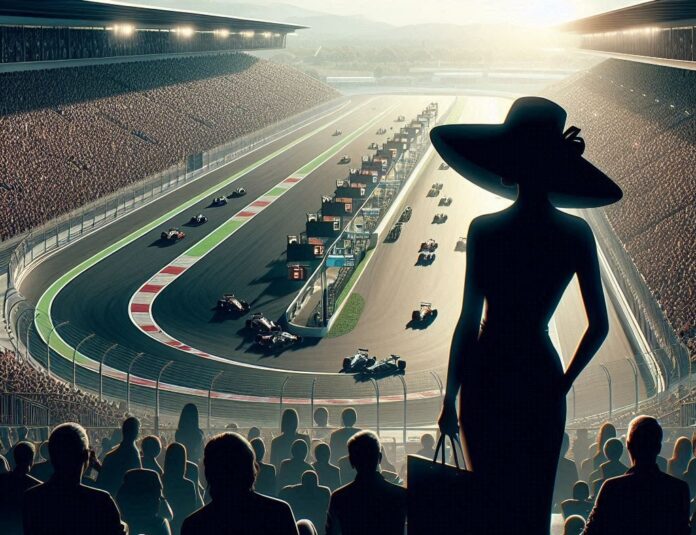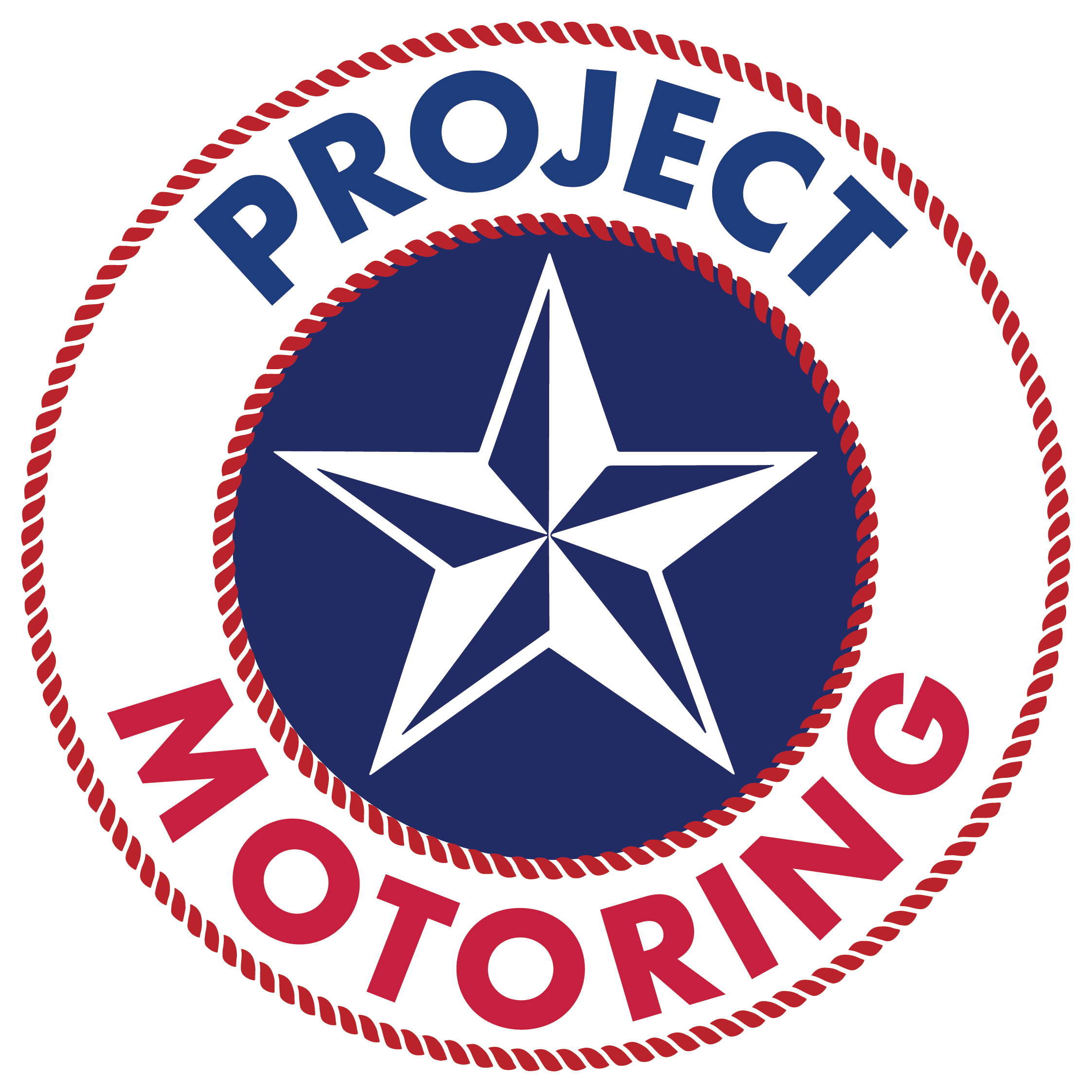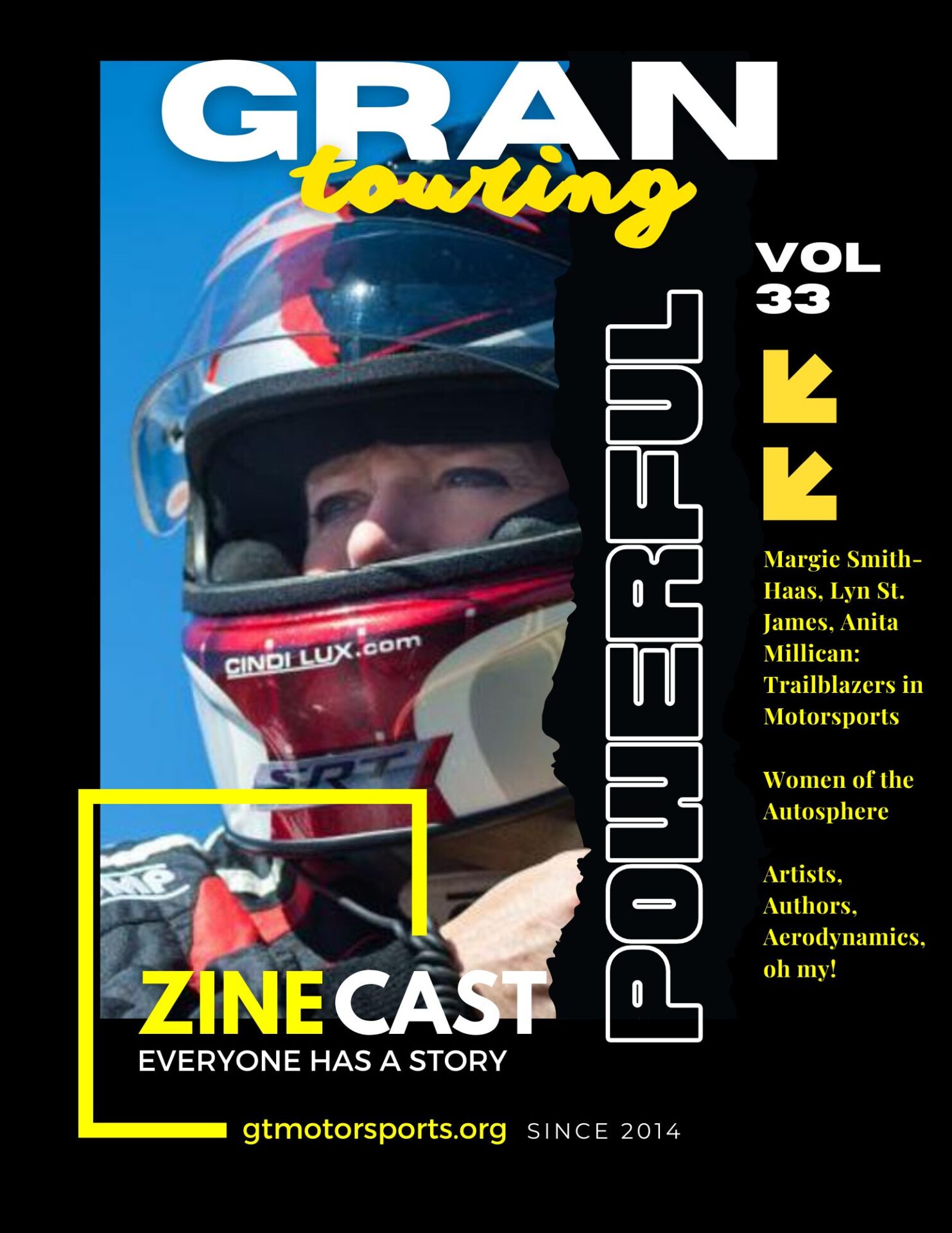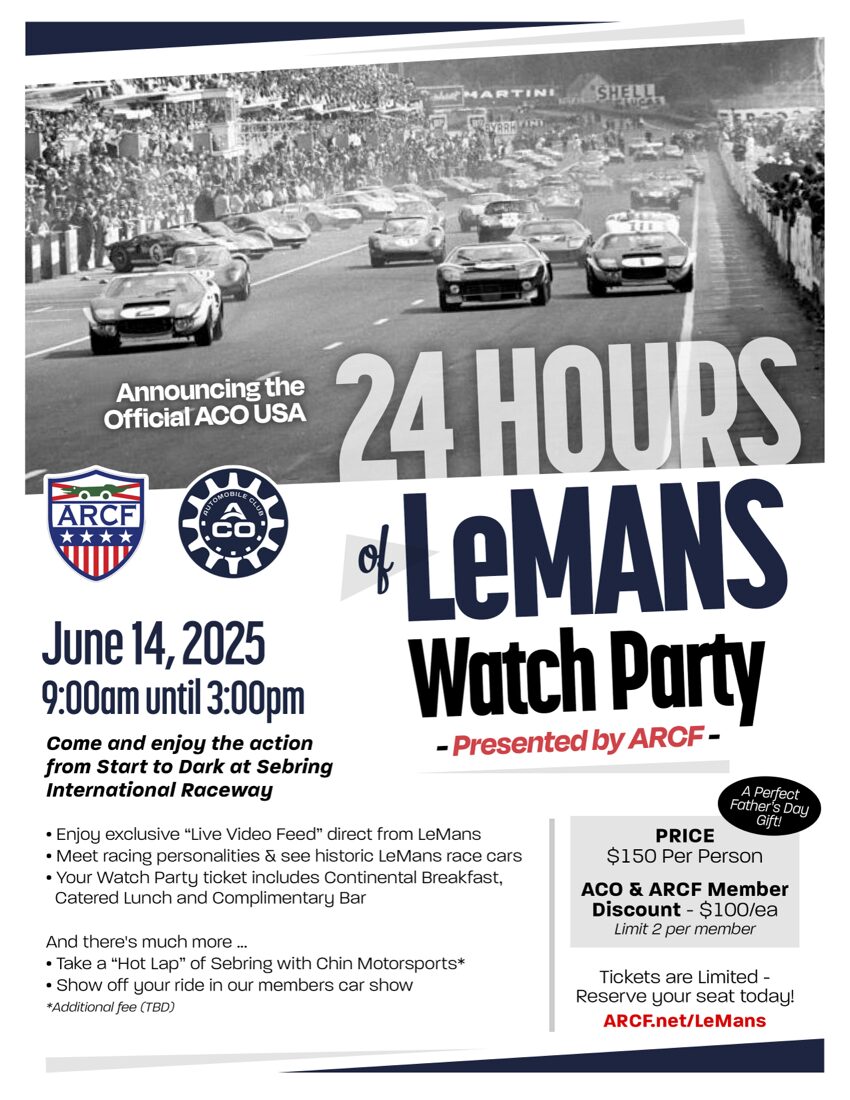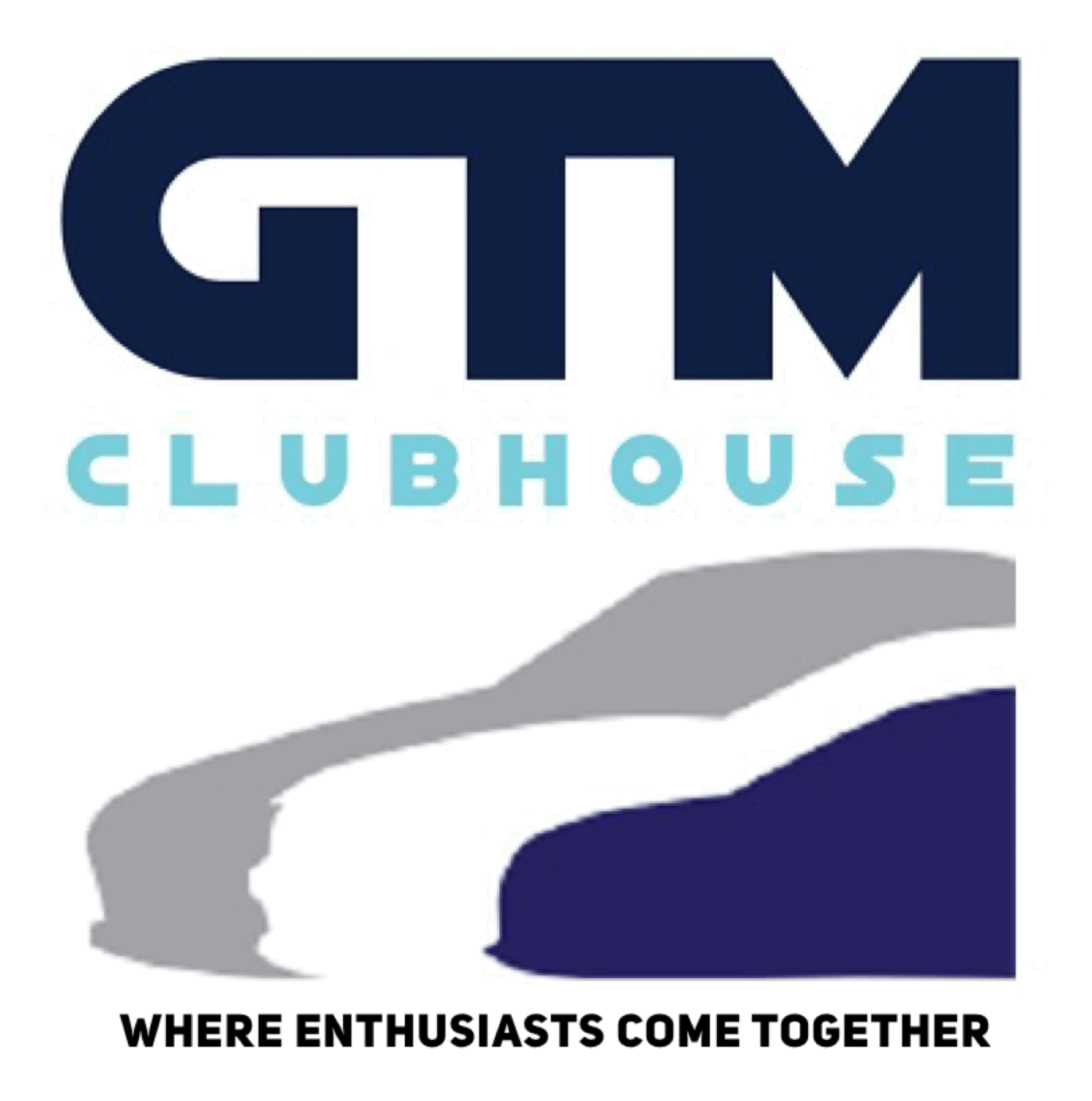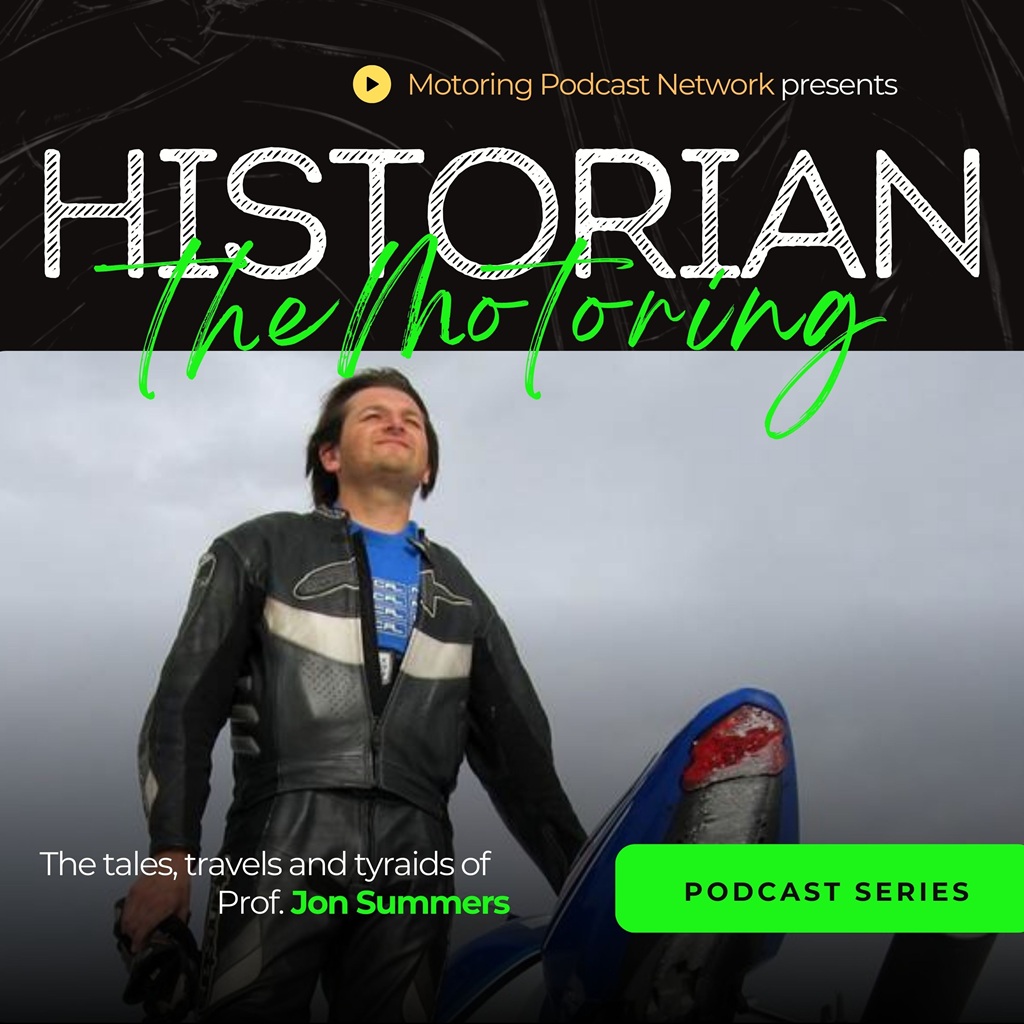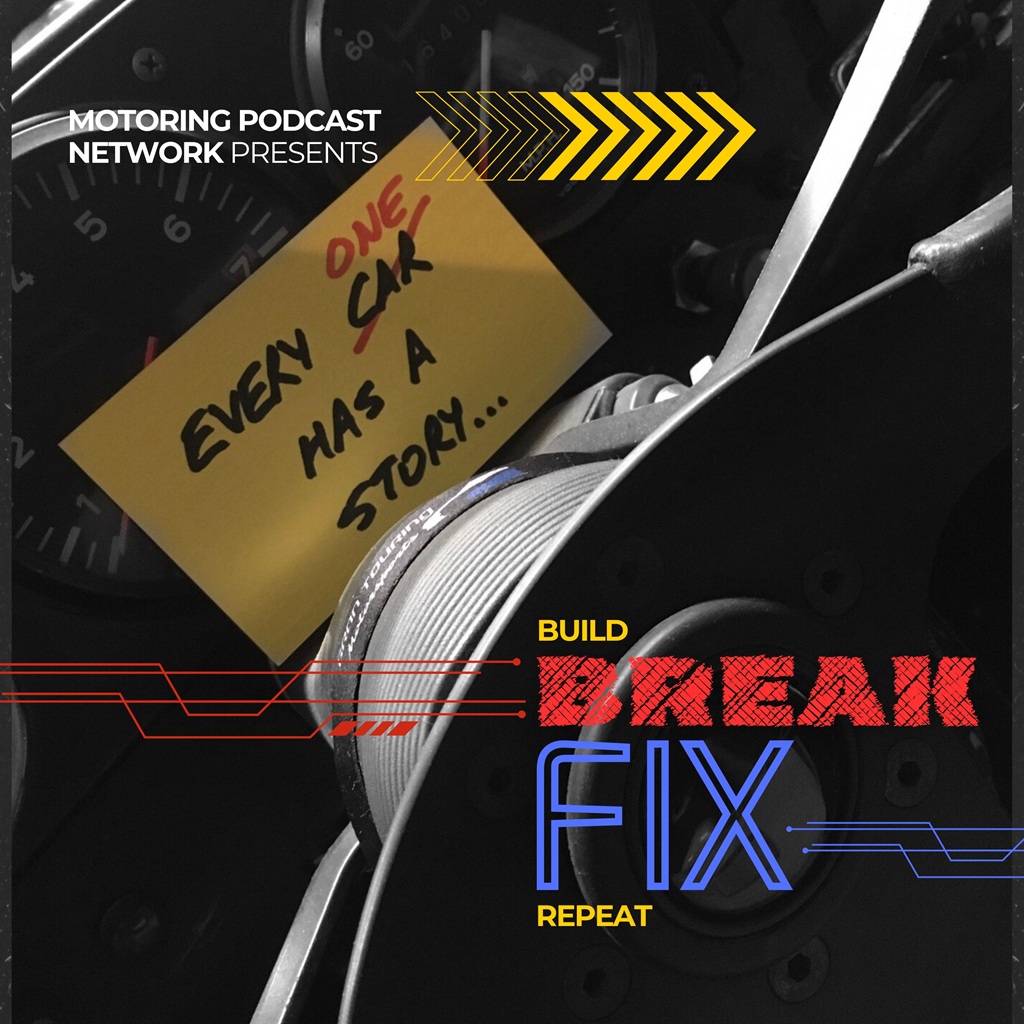You’ve seen it time and time again, our infamous “Yellow Card” and it’s motto “EveryONE Has a Story” but tonight we get to reinforce that sentiment because we’re joined by a racing super-fan that has literally crossed the country following their passion for motorsports for nearly 70 years. We’re joined by motorsports enthusiast DeeAnn Hopings to tell us about racing history, with a view from the many Grandstands they’ve watched from.
Tune in everywhere you stream, download or listen!
 |  |  |
- Spotlight
- Notes
- Transcript
- Highlights
- Learn More
Spotlight
DeeAnn Hopings - Retired Mechanical Engineer for Corning Glass

Racing super-fan. I am a retired mechanical engineer so I can speak to some of the technical stuff as well. So, there’s a number of possible topics. If any are of interest, I can share.
Notes
- Take us through your motorsports (fandom) journey – Where and When did it all begin?
- One of the things that brought you to the show was some of the work we’ve done with the IMRRC, and most recently surrounding Oswego and the Supermodifieds. That seems to be a sweet spot in your fandom resume, including races like Super Dirt Week and more? What made that maybe more special than other racing?
- You can also take a more critical eye as a retired mechanical engineer about racing, so let’s settle a little debate we often have on the show. Which discipline is at the pinnacle of technology? F1? WEC? IndyCar? Your thoughts.
- Did you ever get the chance to turn laps yourself on track?
- You moved from the NY area to finally settling in California – As you moved from the East to the West, how did you notice not only car culture but motorsports change?
- How has racing changed? What are your thoughts on programs like “Drive to Survive?” – does that help the sport?
- You’ve also owned some interesting cars over the years; any of those influenced by being a fan of motorsports? You know the old saying “Race on Sunday, Sell on Monday”
- Even at 75 years old, we’re sure there are some “bucket list” races still on your list? Anything left you’d still like to Attend?
and much, much more!
Transcript
Crew Chief Brad: [00:00:00] Grand Touring Motorsports started as a social group of car enthusiasts, but we’ve expanded into all sorts of motorsports disciplines, and we want to share our stories with you. Years of racing, wrenching, and motorsports experience brings together a top notch collection of knowledge and information through our podcast, Brake Fix.
Crew Chief Eric: You’ve seen it time and time again, our infamous yellow card and its motto, everyone has a story. But tonight we get to reinforce that sentiment because we’re joined by a racing super fan that has literally crossed the country following their passion for motorsports for nearly 70 years. We’re joined by motorsports enthusiast, DeeAnn Hopings, to tell us about racing history with a view from the many grandstands that they’ve watched from.
And with that, let’s welcome Deanne to BreakFix.
DeeAnn Hopings: Thank you. Thank you.
Crew Chief Eric: So like all good BreakFix stories, there’s a beginning and yours starts in Toledo, at the heart of the country, as they say. [00:01:00] When and where did it all begin for you? How did you get addicted to motorsports?
DeeAnn Hopings: Addicted is probably a good word.
If you ask my friends and family, that’s probably what they would say. When I was a kid in Toledo, There were two racetracks, Toledo Speedway was a half mile high bank paved oval, and there was also Raceway Park. Raceway Park was kind of a dual facility in that they ran horses, trotters, and pacers, and it was a dirt track back in those days, and this would have been 56, 57, thereabouts.
What they ran were supermodifieds. At that point, supermodifieds were home built or a sprint car with a bolt on cage. Into the beginning of the 60s, when people started selling off IndyCar roadsters because the rear engine cars replaced them. People bought those and cut them down and modified them and turned them into supermodifieds.
In anticipation of our conversation, if you notice my background, in 1973, [00:02:00] a fellow Toledoan, Raleigh Beal, won the USAC Sprint Car Championship. And that’s the car that he drove. It has a bolt on cage. So that was my beginnings, if you will. In the early sixties, got to see some really good racing, some pretty extraordinary drivers.
One of them was Gordon Johncock, two time Indy winner. Another one was Johnny White. He was rookie of the year, I believe in maybe 64, something like that. Unfortunately, later on that summer, he had a bad sprint car crash that paralyzed him. And so that was the end of his career. Another guy from Northern Ohio, Gordon Dukes.
He was the one that ran the cut down Indy Roadster. From time to time, we’d get people that came over from Sandusky, like Todd Gibson. It was kind of quite a good time. You know, for a kid, cars were fast. They were noisy. That was it.
Crew Chief Eric: Because in today’s day and age, the cars have changed quite a bit. And a lot of folks, especially in your generation, talk about the sights and the smells and the sounds and the circus of racing back then.
And that’s what drew them in. And that’s what [00:03:00] keeps them there even to this day. And we’re seeing this evolution of racing. Racing is changing, you know, the introduction of EVs and things like that. But your journey in the world of sprint cars and super modified was not just a fleeting thing in Toledo.
It followed you
DeeAnn Hopings: into New York. In between, I, uh, lived in Joliet for a couple of years. It is a very different situation because. There are some series that are relatively localized. They’re not national. When I lived in Illinois, I did get to Santa Fe Speedway, which now is gone, unfortunately. Urban Sprawl does its thing.
I got to see, uh, Mel Kenyon there. I had a midget. There’s a richness here that, you know, when I stop and think about things that I remember, one of the other things about that particular event, there was a guy, Terry Wente, who was, I believe, Bob Wente’s son. And he had a midget with an engine from a Cosworth Vega.
That thing had a sound to it. It just screamed to me, you know, that’s part of the attraction, the sights and the sounds, and when you said the [00:04:00] smells back then, super modified, you know, sprint cars too ran on methanol. And so that had a pretty distinct smell to it as opposed to gasoline. At the start of a feature, you know, you get 18, 20 cars out there and then you get this big waft of methanol fumes coming through the stands.
And it has changed. Things evolved, you know, technology does not stand still.
Crew Chief Eric: The early days of your fandom, let’s call it that, 1956, 57 into the early 60s, obviously still in the Midwest, as you went from some of the regional tracks to the larger super speedways and things like that, did you see some of the bigger names?
Because this would have been the time of AJ Foyd and Mario Andretti and names like that. So were you witness to them?
DeeAnn Hopings: Not beyond TV. The first IndyCar race I saw Was at Michigan international. And it was the first one when they went to a full 500 miles, that was in 1981. Before then they had run twin 200s or twin two fifties.
No, that kind of thing. Cause like at the time, a lot of people thought that MIS [00:05:00] was too hard on the cars because the track was relatively rough. They didn’t think that 500 miles that one shot was a good idea. And that particular event. Was the one where they tried to burn the joint down, the, uh, pit fire.
It was bad enough. It’s been two weekends because of rain. But then when they did get the race in, it was very close to becoming a really major fire. Basically, you know, all you saw was a cloud of fire retardant, you know, cause everybody was spraying fire extinguishers, but that could have been really bad.
Fortunately, folks were on top of it
Crew Chief Eric: in your early days, sprint cars, oval track, super modified. So that’s definitely the sweet spot. And you found yourself moving from the Midwest to New York, which is where we got connected through the IMRRC and talking about as we go and super modified and things like that.
So take us on that trip from the heart of the U S. Moving more into New England, into the East coast culture and vibe of motorsport. By
DeeAnn Hopings: that point, the hardware of choice for a super [00:06:00] modifies went was the radical offset that original were pioneered by Jim Champagne. There’ve been kind of a gap in my going to races for a while.
And when I was in college and got married and all this kind of stuff, but we moved to New York state. There was a speedway not far away, just to the east. I can’t remember what the latter name was, but if you go far enough back, it was Shangri La Speedway.
Crew Chief Eric: Which, if memory serves, is in Owego, New York.
DeeAnn Hopings: Yes, and that was where folks like Mr.
Excitement, Jimmy Spencer, and other folks ran. And the other thing that we didn’t really get in Ohio and Illinois were NASCAR pavement modified. There’s some series like that one that their area is fairly well defined and they don’t go out of that Eastern, Southeastern kind of thing. You know, just the way it is.
I do have a bit of a bias for open wheel cars. You know, the NASCAR folks who always say that, you know, it’s our only open wheel division, you know, all this kind of stuff. It is interesting because the people [00:07:00] tend to stay with the series. Now, some do use it as a stepping stone, but a lot of people are, for whatever reason, are lifers.
To me, you know, that’s a wonderful thing because it’s always that yardstick. When you have new people coming in, wanting to move on, these are the folks that you have to get through. And like I said, if you go much beyond the Eastern seaboard, you won’t see those cars.
Crew Chief Eric: You are still a fan of this type of racing today.
Obviously your palate has expanded. You’ve become a fan of other racing. We’ll talk about that, but it’s still the sweet spot. It’s your go to, right?
DeeAnn Hopings: What I found eventually was that every discipline has its attraction. I figured out that I’m not. a staunch fan of a given series and at the expense of others.
To use a term I would consider myself an omnivore, you know. So, you know, that’s, that’s how I look at it, you know. Everything is unique. You can find fun in whatever series. And a lot of it comes down to finding out who the cream of the crop is. And then looking at the others that are just below [00:08:00] that.
Seeing what they’re trying to do, if they’re trying to dethrone the cream of the crop or they want to just build a reputation and move on, who knows? But in terms of the people, the dynamics are interesting. And one of the things you see back east a lot is that it’s a generational thing and you’ll see second and third generation folks.
When I think about that, it’s like, Hmm, I used to watch your father do this, you know? But, you know, that’s how it goes.
Crew Chief Eric: Do you think that being in the greater Corning area, you know, just south of Watkins Glen and you said east of Shangri La, do you think that allowed you to open your aperture a little bit to motorsports because having Watkins Glen in your backyard opened up Formula One to you, it opened up other types of racing that didn’t exist in Ohio and Illinois.
DeeAnn Hopings: And the fact that it was close enough that I went to just about everything that ran there. I used to tell people that my kitchen was 17 miles from WGI, you know, so, so it was pretty close and working for [00:09:00] Corning back when Corning and ISD were 50 50 partners, we got tickets for free. So if you happen to be in the right place at the right time and when they were offered, you know, so I went to many events on free tickets, which was great.
In many cases, I would take a vacation day on Fridays, and so I was there Friday, Saturday, and Sunday, which to me was particularly interesting because from a technical background, it’s like being backstage in a play or a concert or something. It’s like, okay, what did the people do? How do they prepare?
What do these cars look like with the body panels stripped off? What failed? Or what are they replacing? Because it’s time. You know, to me, that was the fascinating thing. And over the years, I’ve taken some folks to the races with me. I always make a point of doing that, showing them that, yeah, the whole show isn’t necessarily out on the racetrack, because you have to do an extraordinary amount of preparation to get you there.
Crew Chief Eric: So we sort of glazed over it, pun intended. You talked about going to college and you went to school to become a mechanical [00:10:00] engineer. Do you think racing influenced that or inspired you to get into that discipline of engineering?
DeeAnn Hopings: No, I’ll tell you what the origin was. When I was in grade school in Toledo, our Springfield trip was to Greenfield village and the Henry Ford museum.
For folks who don’t know Greenfield Village, what Henry Ford did was went to places like the Wright Brothers House and Bicycle Shop or Edison’s Lab and stuff and bought them, had them disassembled, numbered everything, brought them to Dearborn, reassembled them. So that was the origin of Greenfield Village.
And I’ll admit that Greenfield Village just didn’t really do it for me, you know? I mean, it was like, yeah, okay. Kind of thing. But on the other hand, the Henry Ford Museum to me was like Valhalla. And they had. Or still have one of the largest and most powerful steam locomotives ever built. And it was the Allegheny that I believe the Chesapeake and Ohio brand kind of a competition between the Allegheny and Union Pacific big boy at the time, they weren’t [00:11:00] very restrictive.
So, you know, I would sneak away from the rest of the class, climb up into the cab of the Allegheny and it just impressed me so much. It was just this huge machine. I credit that with. My thought process of, you know, wanting to become a mechanical engineer, it’s a machine, whether it’s an airplane, a locomotive, a car, you know, whatever, it’s a machine.
That’s the fascination for me.
Crew Chief Eric: So you talked about bringing other fans with you behind the scenes, because that is part of the track weekend experience. Do you think being a mechanical engineer gave you maybe a more critical eye or more discerning eye, or did it give you the ability to maybe water it down for the layman instead of Well, this is how this works and be able to answer some of their questions and get them excited about what they were seeing.
DeeAnn Hopings: At some point, I realized there’s a such thing as information overload. You know, okay, there’s a point at which people will start to glaze over and won’t hear very much of what you’re saying. And so, you know, that was part of my thought process. And, uh, there were maybe of my [00:12:00] colleagues, other engineers that went with me from time to time.
And so those conversations were a little bit different. The last time I went to Long Beach, I went with one of my wife’s cousins. He lives just down the coast from Long Beach. He’s in the medical profession, medical management kind of thing. He said for a number of years, he worked within walking distance of where They laid out the track, but it had never been.
So in 2019, I guess he went with me. That conversation was very different. They tried to explain things in terms that would make sense to a non technical person. To me, it just adds to the experience. And it turned out. He thought it was really great because rather than going by himself, he had somebody that could explain things to him and answer questions and things, you know, it was fun.
I thought it was fun too.
Crew Chief Eric: So being an engineer and being able to dissect a complex machine like a race car, because a lot of people just look at a race cars, it’s a car and it’s got stickers and it goes faster than my street car, but there’s a lot of science. There’s a lot of art. [00:13:00] There’s a lot of chemistry.
There’s a multitude of things that go into building a race car, let alone your street car. So there’s this debate that often happens on our show. Like you said, there’s these staunch fan bases that if you grow up in NASCAR, NASCAR is the best. If you grew up in Formula One, Formula One is the best. If we strip all that away, just talking about technology, which discipline today Do you think is at the pinnacle of technology?
Is it formula one? Is it WEC? Is it IndyCar?
DeeAnn Hopings: I know it’s not IndyCar. I hate to say that because I am a fan of the series, but when the split happened, one of the outcomes of that, things became very difficult financially. People just couldn’t attract the same level of sponsorship that they could before.
That’s what led to the series being a spec series. But the way even a spec series works, the cream does rise to the top. The differences are very small and very subtle. But what happens is [00:14:00] you add up enough of those small differences and it becomes significant. And say that’s the difference between the Nasty and a Dale Coyne.
When you have the resources and the people to massage things to perfection. One of the things they do a lot of work with wheel bearings. You know, to find pieces that have a minimum of rolling resistance. And it’s not to talk about Dale Point, but a team with those kinds of resources, there’s some things they just cannot do.
Also from a driver standpoint, they’ve had at times some very good people. You know, I was at the Glen when Justin Wilson won. That’s the separation. Even though if you look at stock cars and supermodifieds and silver crown cars and whatever else, you do find a lot of similar technologies, but because of the particular application, they wind up using things a little bit different way.
I won’t say it’s the same shop absorbers, but very similar ones because there’s only a handful of people that do those rod ends. Brake discs, calipers, that kind of stuff. The series aren’t [00:15:00] isolated, if you will. There’s a lot of stuff going back and forth. The people that build chassis, build engines, drive trains and stuff.
I think back in the day, there was probably a lot more separation. And then things didn’t necessarily transfer from one series or another type of car to another. But I’ve been, um, on a few calls with the e par trade folks. They’re very interesting because some of the things really appeal to a techie like me, you know, so.
Guy the other week was talking about the developments that his company has done using a hydrogen as a fuel. And that would be with the common hardware V8s and several track cars and four cylinders and midgets and things. Same thing, only different. Right now, it seems to me it’s probably pretty close between Formula One and the WEC and also IMSA because Formula One has done the hybrid thing for some years now.
With the sports cars, they’re just starting, but certainly they build on the learnings and the technologies and things that have been developed over the last few years, [00:16:00] different in the sense that the power levels that they use between the two series are different packaging. And a sports car can be very, very different.
You know, you got a lot more space to work with, but also you got a heavier car to work with too. So that energy that you can develop probably has a little bit less of an effect since the car is heavier. But I see those two series kind of moving in parallel. A few years ago, I was really quite surprised with NASCAR from the standpoint that for years they had resisted various technologies, independent rear suspensions.
Crew Chief Eric: Fuel injection is one of them. Fuel injection.
DeeAnn Hopings: Yes. You know, electronics and the electronic dashboard that they have now and stuff. Conceptually for them, that was a major step.
Crew Chief Eric: What made us scratch our heads was when Toyota came to the game and we all said, do they know how to build a pushrod V8 with a four barrel carburetor?
DeeAnn Hopings: Yes. Yeah, yeah, yeah. You know, there are others that are thinking about entering the series, like Honda and Hyundai and stuff, you know? So yeah, that’s kind of fascinating. They’re again, behind the curtain, you know, what’s going on. With the companies, they see [00:17:00] some positives. They’re thinking about how they can exploit those.
Crew Chief Eric: So as a fan, what do you think of the current to next generation NASCAR as we saw it as the garage 56 car at Lamont last year,
DeeAnn Hopings: the last several years, they NASCAR has made more inroads in putting road courses on the schedule in that sense, there’s a lot of logic behind it to develop a car in that direction.
Yeah. I, I think that’s a good thing. Now, the thing is what I think may be very different. From what their traditional fan base thinks, you know, to me, Oh man, this is a great thing, you know, but to some of those folks, it’s like sacrilege.
Crew Chief Eric: Garage 56 and the Hendrix team did a really great job of maybe myth busting the idea of what a NASCAR is and what it should be in the future.
And to your point with the introduction of road courses. I’m wondering if not only was it to say we can do this, but also to capitalize on this movement within the formula one community, especially the new generation formula one community that sprouted up during the pandemic through things like [00:18:00] drive to survive.
They want to see cars going left and right, not just chariot races in a circle. So do you think that’s all a catalyst in this?
DeeAnn Hopings: And the other thing too, is, you know, consider the fan experience. If you go to an oval event, basically you’re going to be in grandstands. You go to a road course event, yeah, you might be in grandstands, but there are a lot of places to walk around and see different things and get very, very different perspectives on how things work and who’s good and who’s not so good, who’s got a major set that they’re gonna do a daring pass that nobody else would do, you know, that kind of thing.
It is a very, very different experience for a long time. The knock on road course, while you can’t see anything, you can’t see this and that and everything. But the thing is, one of the things that I’ve thought about the time that I went to MIS, if you’re sitting in the grandstands, if you’re up high enough, you could see the backstretch.
It looks like ants back there, you know, and exactly what can you see? And I’m farsighted anyway. So, but it’s like, I think the argument loses a lot of its energy because of that.
Crew Chief Eric: But the [00:19:00] opposite can be said about Daytona when we specifically talk about the 24 hours of Rolex, because as a fan, and you can probably attest to this too, The experience is fantastic because being in the grandstands, especially higher up, you can see the entire track.
It’s not the most complicated track on the IMSA schedule. There’s far more aggressive and far more challenging and technical courses out there. But as a fan, it’s probably one of the best ones to be at live.
DeeAnn Hopings: I have a little bit of experience with endurance events. The six hour at Watkins Glen and also the Petit Le Mans, you know, if you can migrate, depending on what you want to do from the grandstands to over in the infield, you know, cause there’s some really interesting places to be to watch from, there’s a different thing about it because, you know, This is not a two or three hour deal.
And many years ago, my son and I went to the Glen for the six hour and it rained that day and pretty nasty. Actually, it was kind of chilly and everything, but one of the cars, and I believe it might’ve been Ross [00:20:00] Bentley got involved in somebody else’s crash. They brought the car back to the garage. And when we were in the garage for a while, cause like I said, it was raining.
Basically what had happened was he wound up getting T boned in the side pod, but five or six guys jumped on the car and they’re working on it. It drew a crowd around them watching this. And it’s a pretty good sized crowd, but you know, like three people deep all around the car. They thought they got everything put back together.
They had a new side pod and put that on and started to pull away. Well, the thing is just leaking oil, like a sieve. So then they took everything apart again, found out the fitting that was leaking, took care of that, put everything back together. The car left the crowd that was watching this cheered and clapped the mechanics who said, it’s like, huh?
You know, they were just doing what they do, but they didn’t realize. How impressed the fans were with what they did and how quickly they did it. And it wasn’t like running around with, you know, like a chicken with his head cut off. They were very specific, very measured, very deliberate with what they did.
So to see that was really quite an experience.
Crew Chief Eric: And what [00:21:00] you described is something I try to often relate to people and I think you gave a really great story around why IMSA and even WEC is probably one of the best series to participate in as a fan, not only because they’re inexpensive to attend, but because you can get so close to action.
All over the track, whether you’re at a corner or if you’re in the paddock or you’re in the pits or wherever, and the races are long. So you have an opportunity to experience all of it. Yes. What I’ve noticed going to formula one races and NASCAR races and all those kinds of things, except for IMSA and the mint 400, I got to give props to Matt Martelli and his crew out West.
Everybody keeps the fans at arm’s reach. Go get your beer, go get your hot dog, but you’re not allowed down here.
DeeAnn Hopings: Yes, that’s right. And that’s kind of an unfortunate thing because we see that you mentioned Drive to Survive, which I have a, you know, kind of a, this kind of thing.
Crew Chief Eric: I haven’t watched a single episode.
I’m on a mission never to watch it.
DeeAnn Hopings: I’m not a [00:22:00] fan of reality TV. So that’s strike one for me. But the folks that. are attracted to that. One thing it does help is the access part of that because you realize unless you’re going to pay a ungodly sum of money, that’s as close as you’re going to get to the folks that run the teams and drive the cars.
And it has a purpose. I’m not going to go out of my way to watch one. But I understand the thought process, the fact that Gunther Steiner became so popular. It’s just the man’s personality is just kind of out there, you know, you know, he would be a fun person, I think, to talk to beyond that. To me, it becomes kind of tedious.
Crew Chief Eric: And not only that as a fan and as an enthusiast, I think we have a different perspective. We’re plugged in differently than let’s say the layman, and I don’t want to discount that fandom because it’s a next generation of formula one fan. But I think for us growing up in different eras, you started way before I did, but I grew up in the group B [00:23:00] era in the Senate versus prost era, you know, all these.
And rivalries and things. And so you’re invested as a fan, you’re watching the race, you’re watching the news, you’re reading an auto week, you’re plugged in at a different level and to your point, to watch it as a reality show, you’re like, I don’t care that any of this stuff happened, I understand how. It works
DeeAnn Hopings: as long as I don’t have to watch it.
It’s okay.
Crew Chief Eric: But then there’s the other side of the coin. Like you were talking about being a mechanical engineer, going to these races and kind of talking over people I’ve seen myself and I have to pull back and go, okay, I’m sitting with a bunch of pedestrians that are kind of interested in racing, but I don’t want to turn them off.
Yes. Yes. With a bunch of jargon and a bunch of stuff, because then they’re going to get lost and think this is way too technical. You’re a nerd.
DeeAnn Hopings: Yeah. As Garfield said, I resemble that remark. Exactly.
Crew Chief Eric: And I think that’s the beauty of really being like, you are a super fan of racing, have made it a part of your entire life, but it’s also hard to communicate with people and to relate [00:24:00] to people except if they’re in your circle, right?
DeeAnn Hopings: Oh, it is. It is. And the thing is, not only the knowledge part, but the passion part. The parallel would be football or basketball fans. And certainly, you know, folks are very passionate about the sport and their team. But I would have to say that my passion is at least as significant and as broad as fans of other sports.
But the difference is, what they see is pretty obvious. I mean, they don’t see the preparation part that goes on between the games, but once the game starts, then it’s pretty clear what’s going on, you know, who does what, and who’s likely to do what. With motorsports, when we talk about the physicality of motorsports, all the series are different.
Typically, you have a car of any sort, under body panels, unless you see it at rest when it’s playing. Partially disassemble, you really don’t have a sense of what’s under there.
Crew Chief Eric: And I think racing in the old, old days, we talk about things like, let’s say the Mille Miglia, or you talk [00:25:00] about some of these other famous European races, like Lamar and things like that in Europe, there was always that sense of national pride.
Ferrari is out there for the Italian people. Mercedes is there for the Germans. And, you know, is there for the French and so on down the line. And I think that’s a little bit lost. In let’s say American motorsports and even formula one anymore. I mean, how many derivatives of Red Bull are there like Toro Rosso?
It’s this and that they’re all the same as far as I’m concerned, but that brings us back to whack at least an LNP one. It’s still Cadillac is the Americans, Ferrari for the Italians, Porsche’s there, Acura’s there, Toyota’s there. And so you still have that national affiliation, that sense of patriotism.
Maybe you’re not fully engaged, but you’re like Cadillac’s American. I’m American. I’m rooting for the Eagles. Right. That’s right.
DeeAnn Hopings: That’s right. One of the things that I noticed speaking about Ferrari, the movie Ferrari, if you look at, you know, some of the forums. People thought, you know, Oh, this was fake.
[00:26:00] That’s fake. Uh, kind of thing, but without understanding the history of the meal of media, what happened in 57, you know, not to get really gross, but what happened to the Patago that actually happened. And people said, Oh, that kind of accident can’t happen. And that’s just, you know, salacious and the whole, it’s kind of like, that’s how it happened as gross as it was.
That’s how it happened. You know, it’s unfortunate that sometimes we as fans kind of screen ourselves from the history And don’t really quite understand how we got here That’s kind of sad
Crew Chief Eric: and i’m glad you brought up the movies because you know that opens the door to talk about Some other ones and you know, we can discount all the fast and the furious and the grand And all that stuff, but there’s been a few over the last couple of years The ferrari movie is one of them another one that comes to mind is race to glory Which is about the group b rally days Then you’ve got Rush, which is about Hunt versus Lauda, Ford versus Ferrari, you know, all these kinds of films.
So as a fan of racing and growing up in these eras, what did you [00:27:00] think about those movies and do you call out one as your kind of go to favorite?
DeeAnn Hopings: I’ve probably seen most of them. I won’t say all, but you know, a high percentage of those films and going back to way back in the day, Clark Gable to Please a Lady
Crew Chief Eric: or Steve McQueen’s La Ma,
DeeAnn Hopings: and some of them are really quite well done.
The thing is. I think sometimes people get too hung up with the racing part. Oh, this wasn’t accurate. Oh, this didn’t look right. And you know, that kind of thing. But I think the thing to remember is that people are involved in this endeavor and the strength of one’s abilities and personality and stuff and how that works with other folks, how to mesh all that together to move forward.
Obviously, I never got to meet Carol Shelby or William Ford, Enzo, you know, for most of us, this is the closest we’re going to get, and to give some insight as to the motivations of the person, what their priorities were, and I knew a lot about that. [00:28:00] Ferrari story, but the thing that struck me about that movie was this extraordinary amount of pressure that he was under his company is trying to go out of business a few years before that lost his son, all of the hassles going back and forth between he and Laura, the man could have easily cracked, but he didn’t want a pressure cooker.
Crew Chief Eric: Yes, but also where would the world be without Ferrari, right? If you kind of think about it and sometimes they’re painted as the bad guy, like somebody’s got to be the villain, right? And if you think about it in a lot of motorsport, not all motorsport, but a lot of motorsport It’s either ferrari or porsche that it used to be mercedes They’re held to this level that everybody else is trying to get to you know, which is really interesting.
DeeAnn Hopings: Yeah. Yeah Yeah. And, you know, as we’ve seen, Italy rises and falls with the fortunes of Ferrari.
Crew Chief Eric: Ain’t that the truth?
DeeAnn Hopings: This is serious shit to these folks, you know? Yeah. And I understand that. Even back in the day, I don’t think that was ever true for Maserati, for instance. Right. They were part of the show, but not to the [00:29:00] extent that Ferrari was.
Crew Chief Eric: Yeah. They had bet the farm on Ferrari. Literally and figuratively.
DeeAnn Hopings: Yes. So, you know, it’s like the man had a very complicated life. A lot of other folks would have just folded under that pressure. Just rose above it for God knows what reason to me. That was pretty fascinating. Also, you got other characters that have appeared over time.
When we talk about people leading companies, Colin Chapman or Eric Broadley. Ferrari said something that aerodynamics were for folks who couldn’t design engines.
Crew Chief Brad: Correct.
DeeAnn Hopings: And then Eric Brodney said something kind of in parallel with that, that wings were for people who couldn’t design suspensions. You have these pretty brilliant people saying these just off the wall things, you know.
Crew Chief Eric: I swear Chapman used to say rules are for people who lose, but you know, that’s all.
DeeAnn Hopings: So, you know, it’s fascinating to me and I’m a, I’m a big fan of mid century architecture. Also Frank Lloyd Wright in particular, a couple of things, Wright hated basements and eavesdrops to most people. Those [00:30:00] seem to be pretty innocuous, but to him, Oh God, that was a killer.
Unfortunately, over time, a lot of his houses have, you Foundation and water problems because they don’t drain properly. So it’s funny how extraordinary people can have these flat spots that they just can’t get beyond. It seems.
Crew Chief Eric: Well, since we’re talking about celebrity in motorsport now, you’ve gone to so many races over almost 70 years.
You’ve probably rubbed elbows with some famous drivers and met some interesting people. So you named drop some locals earlier, but talk about some of the celebs that you’ve met.
DeeAnn Hopings: Okay. Well, one of the interesting things. about going to vintage events is that retired drivers show up and particularly Watkins Glen, you know, that’s major vintage events and they would bring in people for grand marshals and things like that.
That was how I met Dan Gurney, Phil Hill, Jack Bratham, John Watson, Vic Elford. The others I met at Laguna Seca, but Gurney was interesting in that he’s signed where I want to sign that. And I, I [00:31:00] recently take the book back to him. And he said, Oh, wait a minute, wait a minute. I said, sure, sure. So he’s flipping through pages and his wife, Evie, was with him at the time.
He ran across a picture of Gordon Johncock and he said, Oh, Gordie would drive into a corner as deep as anybody. He said it almost in such reverence. When I think about the career that Gurney had and all the things that he did, his respect for somebody that he competed against, that was pretty extraordinary.
When I met Bratham, he signed my book, took it back, and I put my hand out to shake his hand before I left. And he stood up and shook my hand. And at the time, you know, he wasn’t in the best of health. A lot of respect for that because there’s something old school about that, that means something to people.
Rick Mears.
Crew Chief Eric: Rocket Rick Mears.
DeeAnn Hopings: Rocket Rick, yes. Penske moved to the IRL and he was still with the team, you know, in an advisory capacity. And so he was there for an autograph session. He signed my book and I took the book back and I said, thank you. And he said, no, thank you. Nobody else that I’ve ever had signed [00:32:00] anything for me reacted that way.
To me, it spoke to the kind of person that he was and how his celebrity hood or whatever you want to call it. He wasn’t all about that as some people would be. That was a very nice thing. Ray Hall, Bobby, one of the books I have is, and I have a collection of motorsports books. So I, uh, opened where, when he won at Indianapolis and there was a of him with Jim Truman and he signed it and he just paused.
What that said to me was that he was remembering that day and his friend, Jim Truman, he didn’t have to tell me that, you know, I could see it. A little story about Ken Tyrell. Many years ago, the first company I worked for was what used to be Libby Owens Ford, which is now Pilkington North America. We did automotive glass and architectural glass.
We would go up to Detroit for various trade shows. I think it was at the SAE. Ken Tyrell was there. This was in the day when he was sponsored by Data General and he had Renault engines. And this was into the turbo era. But what he told me [00:33:00] was Alboreto won the last event with a Cosworth EFV in a Tyrell.
He said, Alberto was just amazing to us because the mechanics, when they would take the cars apart after the race, there was hardly any brake wear. We never understood how he got the car stopped. People drop these little, little gems that, I mean, I didn’t. Ask about that. He just volunteered that, you know, it was pretty amazing.
So the Paul, he told me that the one race at Indianapolis, he won where it was the first time the winner’s share was a million dollars. And there’s that photograph of him
Crew Chief Eric: with the pile of money.
DeeAnn Hopings: Right, right. What he said was, and I think it was Terre Haute banks and savings or whatever it was, they brought the money out.
And what he said was they brought like. 1. 4, 1. 5 million dollars because they didn’t think that a million would look like enough. And he asked me, he said, well, do you know the story behind that? Because that was the photograph I had him sign. I said, do you know the story behind that photograph? He said no.
And he explained it to me. [00:34:00] There’s some interesting things that happen beyond the view of regular people, I guess.
Crew Chief Eric: So out of all the celebrities that you’ve met, can you pick a GOAT? A greatest of all time? Maybe not out of even the ones that you’ve met, but out of all of racing, is there somebody that stands out as your hero up there on the podium?
DeeAnn Hopings: I wouldn’t put it like that. I would say For whatever reason, people that really impressed me, a lot of that would be people who were successful across various disciplines. And that would be the Gurneys, the Foytes, the Andrettis, folks like that. You know, there’s always this debate about folks coming from a circle track background.
And if you go to different series, you know, IndyCar, NASCAR, you have to learn to road race, obviously. I’ve always been impressed by people who were able to make that transition and really became very, very good road racers. When, uh, Mark Martin was driving, I happened to be at WGI for all of his wins.
Never put a wheel wrong, complete control. Nobody could touch him. [00:35:00] One who came very close. Interesting enough was Lake Speed. Yeah. Yeah. It’s just like, hmm, okay. And then Jeff Bodine had a pole there. Ken Schrader had a pole there. I was like, damn, newfound respect for these people. Along with that would be people like Kyle Larson, Jimmy Johnson.
I find it really interesting them doing IndyCar. It’s like, okay, cool. That impresses me quite a bit that they were able to learn and apply. So that’s a great thing.
Crew Chief Eric: If you could sit down and have a beer or on the bench there in the grand stands with anybody in motorsports history, who would that be?
DeeAnn Hopings: There’s something about the Austrians that is very direct and not sugarcoated or anything like that. It’s the kind of thing, if you don’t want to know somebody else’s truth, don’t ask He always struck me as an interesting person in general. But his will was just extraordinary. How many people would come back from the kind of injuries that he had to be a champion again?
You [00:36:00] know, I mean, that’s just a, an extraordinary
Crew Chief Eric: perseverance.
DeeAnn Hopings: Yeah. In a similar vein would be, uh, Alex Zanardi is a trite saying that refuse to lose, some people may not say that, but for some reason that is ingrained in their minds. There are no alternatives
Crew Chief Eric: and Alex definitely exemplifies that that’s for sure.
So I agree with you mentioned all arounders and dreaded definitely on that list because he raced dirt oval stock cars, AB cars, Lamar formula one champion. I mean, the list goes on and on and on, right? We talked earlier a little bit about the evolution of racing modern formula one. What do you think about Andretti returning to formula one?
Andretti Autosport, you think it’s gonna happen?
DeeAnn Hopings: Andretti Global.
Crew Chief Eric: Yes, yes, that’s right.
DeeAnn Hopings: The FIA was okay with it. The Liberty folks and the team owners, that’s some petulant BS to me. It’s like protectionism. Right. The thought that, Whatever Andretti is going to bring [00:37:00] to grow the sport is not going to be enough to offset the loss to the teams.
I don’t think that’s true.
Crew Chief Eric: I say let him buy Gene Haas out of his misery. You know what I mean?
DeeAnn Hopings: Yeah. Yes, that would work for me.
Crew Chief Eric: Rewinding the clock, if Ecclestone was still at the helm, do you think he would have let them in already?
DeeAnn Hopings: I think he would have worked on the naysayers, figured out a way either to convert them or work around them.
Crew Chief Eric: I mean, as fans, I think we all sit here and wonder, why can’t we make the field bigger? This doesn’t make any sense. What’s the big deal if we add another two cars or whatever?
DeeAnn Hopings: And also with respect to the feeder series, that’s two more seats. Yeah. There’s a real Problem in Europe that they’re developing drivers.
It seems at a faster rate than seats become available. And that’s really unfortunate. I can’t say there’s a real good way around that, but you have people who are very talented, who if they show up at the wrong point in time, it’s just not going to happen for them. And that’s pretty sad. The [00:38:00] flip side of that is the BS with the super license.
And. How pretty much all of us racing is so discounted in the way the points stack up. It’s like saying, well, we really don’t want you guys.
Crew Chief Eric: And that conversation actually opens a door to a larger problem in motorsport that nobody has a silver bullet to solving this problem, but it’s a conversation around diversity in the paddock and especially behind the wheel.
And there’s been a lot of talk lately about the formula one Academy and, you know, the demise of formula W it’s on pause. Don’t worry. It’s coming back guys. Yeah. Okay. Yeah. What are your thoughts on maybe the first woman to come back to formula one since 1976?
DeeAnn Hopings: Well, Lombardi.
Crew Chief Eric: Yes, exactly. The Lombardi. You know that, and maybe other people coming to the table in formula one.
Do you think if we can check this box, if Andretti can make it happen, that might loosen the reins a little bit and allow a little bit more diversity in formula one
DeeAnn Hopings: and perhaps this is of greater importance for [00:39:00] folks who work within the teams, the technical folks, the marketing folks to get the team to the races and be successful.
If you remember Dave Despain, if you go back a ways, when James Stewart was real hot in motocross, you know, when he did Wind Tunnel, I put a question to him, since James Stewart has been so successful, have you seen any increase in black people attending events? He thought for a moment and he said, I don’t know.
I don’t think so. What that says to me, yeah, pinning hopes on one or two people is probably not the thing to do. But on the other hand, it is important from the standpoint of if you see yourself, that reinforces the notion that It is possible when they do the garage shots, for instance, in Formula One, and you see the women that are mechanics and technicians, you see black people that are there.
And I’m not sure why Ruth Buscombe and Bernie Collins are not doing strategy work at the moment. [00:40:00] I’m not quite sure what happened there, but the woman who, um, engineered Audi to those Le Mans wins, and she’s been on the Sky studio broadcast. You know,
Crew Chief Eric: badass people. Absolutely. What really needs to be done is maybe the media needs to spend less time promoting the events and promoting the people, shining a spotlight.
Yeah, we all know who Lewis Hamilton is at this point, right? But who’s his tire guy? Or who’s the girl that’s doing his flight recorder data analysis? Those kinds of things. And I’ve said that before, when I’ve watched documentaries, they’ll show you like three seconds of a person that he’s like the tire technician.
I’m like, I want an hour on that person and their job, because it’s super interesting than watching Scott Dixon do laps and having some famous actor do a voiceover, you know, I’m like, whatever
DeeAnn Hopings: it’s like you said. Everybody’s got a story. We miss out on those. NASCAR did a little bit of that at various times with pit crew members, when they started getting people specifically to do those functions that were not mechanics, people came from [00:41:00] various athletic backgrounds, that was what they brought to the table rather than.
Sending Bubba to the gym three days a week. These guys started out as athletes, so they understand the training and the dedication. So all you need is somebody to focus them on the things that they need to do specifically to be able to function in that particular job. So you’re not starting from scratch.
Basically we learn
Crew Chief Brad: and
Crew Chief Eric: evolve. And I think you inadvertently touched on a nerve that a lot of people just don’t resonate with, which is that motorsport is a sport. There are top elite athletes running at the upper echelons of motorsport. And so if you’re not a fan plugged in, like you are and plugged in, like I am, you don’t understand the physicality and the G’s.
Driving a Formula One car is akin to flying a fighter jet. And so these guys are under an immense amount of pressure, whether it’s G forces, temperatures, just all sorts of stuff. And so you have to respect what they’re doing behind the wheel of those cars. It’s more than just driving around.
DeeAnn Hopings: [00:42:00] Every time I hear that, well, it’s just driving.
It’s like, yeah, it’s like, let me get a broom and beat you with it. But yeah, that’s the thought process. Let’s see. The thing is the vast majority of people. Have probably never gone much over 70 miles an
Crew Chief Brad: hour
DeeAnn Hopings: on an expressway. When you think about driving a car that can pull over five G’s in a corner, and you’re doing that multiple times a lap for 70, 80 laps over the period of, what, an hour and 45 minutes or so, you have to be fit.
There’s no choice or else you get so far and you just realize you need to quit because you just can’t go any further. When, uh, IndyCar modified the, um, screen, put some air vents in it, I always thought it was interesting because some people would choose to use cool suits, others would not. That, you know, it’s kind of a confidence thing that people felt that their training and preparation was of such a level that wouldn’t be a problem.
It’s like, damn, you know. [00:43:00] That says a lot.
Crew Chief Eric: You alluded to something else there, as you were talking about, you know, how some people have never gone above 70 mile an hour, you know, some people do track days, we all have mixed experience with driving, you know, as a fan, a lot of people will probably say, Oh, you’re just a long bench team principal.
What do you know? Armchair quarterback, you know, that kind of thing. Have you turned some laps on the track yourself? Have you gotten out there to experience it?
DeeAnn Hopings: Yeah. Not competitively, but folks do schools. When I lived in New York state early on was when legends cars started to become popular. There was a dealer over in Binghamton, which is about an hour away between Corning and Binghamton is what I referred to as Shangri La Speedway.
And, you know, he’s trying to sell cars, basically what he’s doing. So the, you know, the fee was pretty low for that reason. It was kind of funny is in the middle of the week, it had rained quite a bit the night before. I’m no stranger to a gas pedal, did a lap and you know, it’s like everything felt good. So second time going out on the backstretch, went through a puddle.
The next thing you know, we’re just all over the place. And [00:44:00] I’m sure folks were laughing about that, but it really got my attention. But after I did that, it’s like, yeah, that was kind of fun. You know,
Crew Chief Eric: do you think it changed your perspective?
DeeAnn Hopings: No, because it felt pretty much like I anticipated. And the thing to me was I fit.
I’m not particularly tall or big or anything, but it just, it fit to me where the steering wheel was, where the pedals were, where the gear shift was, you know, I was home. I did many years ago, Richard Petty’s school at Disney World Speedway, which is gone now. It was a weird thing because what the Disney people thought was they didn’t want to upset not the skyline, but the view for when you went past the track.
So what they would do for the events that they had, they would put the stands up, take them down, put the stands up, take them down.
Crew Chief Eric: That’s bizarre.
DeeAnn Hopings: It was kind of doomed to failure. Yeah. Back then they would have been a bush car. It was kind of a fun track, pretty well banked, but relatively short. Last thing I did, Ken Bouchard, he did a thing at Thompson Speedway in Connecticut.
He had a fleet of pavement modified. That was [00:45:00] fun. I liked that. And there was a point at which I helped a friend of mine maintain his paper modified. There were interesting cars in that, if you see people kind of slither to get in there, you know, well, once you’re almost there, for me, there was nothing else to grab on to.
So it’s like the last four or five inches, you just kind of. You know, there again, once you’re in there, you get strapped in and everything. It’s like, it’s cool.
Crew Chief Eric: So do you think that was maybe a dream realized getting to drive an asphalt oval car? You know, having watched them since a kid?
DeeAnn Hopings: Yeah. Yeah. I’m looking for something else to do.
Kenny Wallace and Everham and I forget who else was involved. Do this thing where they do like a dirt modified sprint car and maybe a midget, something like that. When I found out about it. It was about two or three weeks too late, so I missed their schedule, but that seemed kind of interesting. It is the experience of it to do that.
It’s like something for your memory banks that you carry with you.
Crew Chief Eric: In the intro, we talked about how your motorsports passion followed you across the country. So [00:46:00] eventually you made your way from new England all the way to California. So let’s talk about the difference in racing. You mentioned long beach and Laguna Seca in previous parts of the conversation, but what was it like?
Going to the car capital of the United States, right? California.
DeeAnn Hopings: Yeah.
Crew Chief Eric: What’s the vibe like, the car culture? Are they invested in motorsport in the same way they are on the east coast? What was that like
DeeAnn Hopings: for you? I would also add to that the Peterson Museum and also the Nethercut. I’m a member of a car club.
Matter of fact, I am the community liaison officer. But we took a trip to the Nethercut and I will tell anybody, if you want to go see a car museum, it’s not just a car museum. The Nethercut is just an extraordinary place. The thing that surprised me, hardly any of my car club members are motorsports fans and they’re into fifties, sixties, bit into the seventies, Detroit cars.
Some of the folks who do have sports cars and foreign cars of various sorts until fairly recently, they felt that they weren’t really all that [00:47:00] much appreciated.
Crew Chief Eric: That’s not what Mecham says.
DeeAnn Hopings: Well, we have a regional collector car auction here twice a year. And they do something like about 6 million over a weekend.
Meekum and the rest of these folks are doing 20 and 30, but yeah. So, so that was real different for me. They go through a process early in the year where they decide or figure out what kind of special events. That the club is going to do, and I proposed going over to the other side of the mountain here to Paris Auto Speedway, the pass.
And I’ve been over there a few times to see USAC CRA sprint cars, and these are non wing sprint cars, 410s. The Outlaws have run there, saw the Outlaws over there. So what I proposed, okay, let’s pick a Saturday night and we’ll go over to the sprint car races. The club has a little magazine. It’s like maybe 10 pages or so every month for the three months leading up to that, you know, I would capture cars and sprint cars on dirt in action and some discussion about that.
I even [00:48:00] wrote a document, Sprint Car 101. Where explained the technical details cars, about 1400 pounds, 410 cubic inches, about 900 horsepower, basically data. And then how the races went there’s qualifying, there’s heat races. You know, sometimes if you have enough cars, the last chance qualifier in the future explained things like rim riding or bottom feeders, slide jobs and stuff like that.
We got six people. What? I know, I know. I’m thinking, I don’t think I could have done any more, you know, to bring people out for this. Like, I was amazed. There was one guy who couldn’t make it, why’d you, who actually runs a late model over San Bernardino. One of the other people back in the day raised hobby stocks, but you know, the rest of them had never been before, but that was it.
When I joined the club, I would not have expected that. But, you know, over time, I learned where people’s thought processes were.
Crew Chief Eric: But you also came to the club with an interesting resume of cars in your history. I’m going to read [00:49:00] off a couple here for the listeners. 72 Honda 600 Coupe, 1970 Lotus Elan Plus 2S.
You had a Biat 131, a Chevy Citation. We could talk about that. Probably in a whole episode to itself.
DeeAnn Hopings: Yeah, I can tell you why.
Crew Chief Eric: Exactly. 84 VW Quantum. You had one of the most sought after Nissan Maximas ever. A 94 Isuzu Trooper. And then you’re currently driving a JCW Mini Cooper Clubman. I noted that You are a manual transmission purist.
You’re part of the save the manual club. Like I am, you know, one of the dinosaurs out there, all of these cars, manual transmission since day one.
DeeAnn Hopings: To be perfectly honest, I’m a little quirky in some ways. I’ll claim that I grind my own coffee beans, for instance. So it just works for me. The cars, sometimes I was trying to accommodate some things from a family perspective, you know, as the kids got older, that was the reason behind the VW quantum wagon.
Crew Chief Eric: Oh, you had a, was it a synchro? Cause that’s even better.
DeeAnn Hopings: It wasn’t the synchro [00:50:00] model, but it did have the Audi five cylinder drive train that had the shortest shifter throws of any car that I have ever driven. I mean, it’s almost like you could just wheel it into place. The Germans were also a little interesting because it had power locks, but they were vacuum driven.
Crew Chief Eric: Yep. That came from the Rocco’s.
DeeAnn Hopings: and I think you could open and close like about five times before the reservoir was done. .
Crew Chief Eric: That’s correct. Then you had to turn the car on to get it to refill.
DeeAnn Hopings: Yeah. So I was like, okay, they’re a little quirky. But the first dealership I went to, I was looking at a year old one before I bought the new one at another dealership.
But the sales guy inadvertently, or maybe he just wasn’t smart enough. I don’t know. Locked my wife in the back seat because he tripped the child proof lock, then couldn’t figure out how to undo it. I’ve run across some salespeople who were, as my grandmother would say, really doozies, you know.
Crew Chief Eric: In that list of cars, though, you had a proper British roadster.
So, talk about the Lotus a little bit.
DeeAnn Hopings: I’ve always been a fan of Lotus and of Colin Chapman’s. [00:51:00] I like his thinking about things. The one thing about the original Elan and then the, the larger plus US. You wouldn’t want to have a wreck in one of them. The way they did the backbone chassis was like an X. So if you got T boned in the door, God help you, because there was very little structure there.
Matter of fact, there’s a company in the UK that is offering a substitute chassis for the Lotuses. It’s a tubular shield, but it does have structure under the rocker panels. Then it’s a lot safer.
Crew Chief Eric: A modicum of safety, yeah.
DeeAnn Hopings: Yeah, yeah. It’s all relative, you know. I like what Chapman did with the cars. That car, just a little under 1, 600 cc’s.
I think that one, it wasn’t a big valve. I think this one was like 115 horsepower. But because it was so lightweight, it was surprisingly quick. And of course, Lotus handling. I’ll never forget when I first bought it. I took my grandmother for a ride just about a block away from her house. There was another side street that came in at an angle.
And so we left the house. I think I hit second gear going around that dog [00:52:00] leg and she says, Oh, I like the car. It’s just, unfortunately when I bought it before we had our first child, when she came along the plus two part in the back had these two kind of rounded areas to sit in the car seat didn’t fit.
So instead of leaning back a little bit, she wound up sitting like bolt upright. And so I said, this isn’t going to work. So, uh, that was what led to the Fiat. The Fiat was an interesting car because at the time it was billed as a poor man’s BMW 320.
Crew Chief Eric: I could see that. Yeah.
DeeAnn Hopings: And
Crew Chief Eric: that was, that was pretty accurate.
But it was no 131 Abarth. They are
DeeAnn Hopings: diametrically
Crew Chief Eric: opposed.
DeeAnn Hopings: Yeah. Yep. Very true. And it unfortunately met a sad fate. One of the few times I would leave my cars outside and not put it in the garage, that night, probably two in the morning or something, there was a windstorm. We had a tree in the backyard that was more dead than [00:53:00] we thought, and evidently it got to waving back and forth and just fell right across the car.
fell right over the radiator. It was history. You mentioned the citation. Oh God. Was it X11 or was it base? No, it wasn’t. It wasn’t. After the tree fell on the Fiat. So now we’re thinking about, okay, we need to obviously replace the car because it is not going anywhere. As I said, I worked for Livio and Ford at the time we, you know, were long time glass suppliers to them.
And There was a bit of a recession going on and stuff. And so I purchased the citation out of loyalty. Basically,
Crew Chief Eric: did that turn into hatred after owning a citation? Cause you’re the only citation owner I’ve ever met. Nobody has anything good to say about him.
DeeAnn Hopings: It was very unimpressive.
Crew Chief Eric: That’s a very nice way of putting it.
DeeAnn Hopings: Yeah. Yeah. I’m being charitable here. You know, it didn’t run badly. Didn’t handle badly. Brakes were something else because the rear brakes tended to lock up first. I had an accident because of that. For that didn’t [00:54:00] hit anything, but I’m leaving work. A dog starts kind of trotting across the street, realized that there was another car coming from the other direction, all of a sudden took off running.
in front of me. It hit the brakes and hit the dog. The dog wound up daggering away, but I wound up between the street and the sidewalk backwards. Fortunately, there was nobody out there at the time. It was like dinner time. I mean, I would have, you know, just broadsided somebody had they been there.
Crew Chief Eric: It sounds like you bounced off the dog.
It’s not good. The brakes were on that thing.
DeeAnn Hopings: I was almost pissed because the dog walked away. It should have been laying there on the street. Oh man. Then the way I would go to work in Toledo was on the other side of town where I live. I would go across a place where there was an old roundhouse for locomotives and it was about eight or ten sets of tracks that you had to cross.
I had my hand on the gear shift as we were kind of bouncing over the tracks, my hand just kind of pulled back a little bit, broke the synchronizer [00:55:00] rings. So it was under warranty because I’d only had it not even six months by that point. Really pissed me off because I took it back to the dealer. He tried to explain that I didn’t know how to drive a car with a manual transmission.
That’s not happening. That was the fourth car I’d owned with the manual transmission. So it’s like, no, but they fixed it. They didn’t argue, you know, really weird things. You’ve gone along and there’s a bunk that was the rings falling down to the bottom of the gear case, you know, the Honda 600 was Honda’s spin on what the mini was, although I think the top speed of the thing was like 82 miles an hour
Crew Chief Eric: with a tailwind being pushed by Silverado.
Yeah, so of all the cars you owned, maybe the Lotus is in this category. Were any of them inspired by going to the races, something you saw in the paddock or you were like, you’re a fan of Colin Chapman. So obviously again, the Lotus checks that box, but anything else you were like, you know, this is calling me because you know, the old saying, right?
Race on Sunday. Sell on Monday.
DeeAnn Hopings: Yeah. [00:56:00] Yeah. I think I was less affected by that. You know, in the case of the Lotus, it was more realizing what Colin Chapman did with his cars, not only street cars, but the race cars also. A lot of times folks were just trying to catch up. The only one I think that might’ve played a part is perhaps the mini, but you know, I would’ve had to bought an early one, you know, for that to be strictly true.
Other than when I had to compromise in order to fit the four of us in a vehicle, I pretty much bought what I, what I liked.
Crew Chief Eric: Because normally we ask people, what’s the sexiest car of all time? And you get answers like, you know, the Ferrari Daytona or the Jaguar E Type and all this kind of thing.
DeeAnn Hopings: Yeah, yeah,
Crew Chief Eric: yeah.
Since we’re motorsports super fans here, the possibility, you know, we win the lottery, do we buy a race car? What are you going to do with it?
DeeAnn Hopings: If we have like Nick Mason kind of money, Elon
Crew Chief Eric: Musk kind of money.
DeeAnn Hopings: Yeah.
Crew Chief Eric: Three race cars that would be in your garage, doesn’t matter the discipline. What would they be?
The
DeeAnn Hopings: first lay down roadster, [00:57:00] Minneapolis that George Sala and Howard Gilbert, uh, Clint Eaperly, I guess, built, you know, the one that won at 57, 58, that to me was what attracted me to IndyCar racing. Another one would be the Ferrari Tipo 156 that Phil Hill won his title with. The last one would be kind of an oddball.
Go back to Jordan F1. Probably was their first car with the green seven up livery. I
Crew Chief Eric: remember that
DeeAnn Hopings: one. That was a beautiful car. Was it Jerry Anderson? Was it the guy that designed it? He was one of the last that could Design a complete car.
Crew Chief Eric: Don’t let Adrian Dewey hear you say that though, okay?
DeeAnn Hopings: Yeah. Well, you know, we don’t really know if he’d ever designed any suspensions or anything.
I don’t know, but Anderson was it. Somebody said he could probably pick up the back end of the car by himself. He was pretty a good sized person, I guess. As it also ran for the top three cars. I would also include the, uh, Ferrari 323 SP.
Crew Chief Eric: Ooh, that’s a really good choice.
DeeAnn Hopings: Oh God, [00:58:00] hearing that car at Watkins Glen being over around turn one and hearing it go up the S’s.
Ah, that was a wonderful sound. That was a wonderful sound. Nothing like a Ferrari. Unfortunately, it was kind of sacrilege when it got to a point where Ferrari didn’t want to develop it anymore. Kevin Durant put a, uh, Judd V10 in the back. Which I perfectly understand, but it’s like, Oh man,
Crew Chief Eric: you mentioned earlier missing the opportunity to drive the midget oval cars and things like that.
And you kind of alluded to, it might still be a possibility for you to do this near future at 75 years old. I got to believe there are still some bucket list races on your list. So what’s left that you want to attend? What do you want to go see?
DeeAnn Hopings: Indianapolis. Indianapolis. For one, I’ve been to the museum, but not to the race.
Go back a ways when Ganassi employed Bruno Iancara and Nicholas Manassian. I was there for a conference and of course played hooky a little bit, went over [00:59:00] to the Speedway, to the museum. They were testing there. And so that probably would have been like mid nineties, maybe late nineties. That was the closest I got to the speedway.
Lamont would be interesting just because of all the things that go on. There’s a race and there’s this big party and the history of it. It’s a good and bad history. Unfortunately, going back to Ford versus Ferrari, that was certainly historical. When they did that 250 down the Mulsanne and then retired the car.
It’s like, okay, but I ran across a video recently. Mazda did one back in late 80s,
Crew Chief Eric: was it? Oh, the 787B? Yes. 1991.
DeeAnn Hopings: 91, okay. So there was a bit of a reenactment because when Johnny Herbert did the last stint, he couldn’t get out of the car, basically. So he didn’t make it to the podium. They brought the car over.
He did a lap and got out of the car and, you know, was on the podium and stuff. So listening to that car, watching it, That was an extraordinary piece. It just was [01:00:00] for a lot of cars. It is about the sound because it is so distinctive and I’ve been surprised every now and then I find two dissimilar cars that sound very, very similar.
If you remember Aston Martin built prototype, the AMR one, they had Reeve Calloway developed their engine, the three liter V8 double rear cam. Sounded almost exactly like a Cosworth EFV. And I’m like, really? That Mazda, it just sang.
Crew Chief Eric: Well, there’s nothing like a quad rotor Mazda. That’s for sure. That’s a one and only engine.
DeeAnn Hopings: That’s one of the interesting things about sports car racing. You have more than one series on track at the same time. That presents a whole different set of conditions. And often the results are determined by people doing things they shouldn’t be. And in places where they should not be. It happens. Yeah.
Frequently enough that, you know, it shouldn’t be surprising.
Crew Chief Eric: All right. Last one for you.
DeeAnn Hopings: Sure.
Crew Chief Eric: We talked about a lot of racing and we could probably spend a whole other episode diving into all the stories you [01:01:00] have, but if you had to pick a decade, like the golden era of racing, what is that for
DeeAnn Hopings: you? It would probably be the sixties and in the end of the fifties, leading into that, just from the standpoint with.
Moss and Gurney and Phil Hill and Ginther and all the rest, you know, Graham Hill and Clark and eventually Stewart and stuff, you know, folks of that era, there were very few slouches, you know, everybody had a pretty fair amount of talent. Obviously some had more than others. There were a lot of extraordinary people.
It was a different situation because as many folks that were lost during that time. It would have been even worse had people not driven with the respect for their fellow drivers. And Senna was extraordinary, don’t get me wrong. But his thing was to put people in a situation where either they yielded to him or they crashed.
You know, it’s a hell of a choice when you think about it, you know. That’s not actually outwitting. [01:02:00] Somebody or figuring out what your strength is compared to their weakness. There was a dark side to Senna. Similarly, there was a dark side to Michael Schumacher as good as they were, that tarnishes the shine a little bit, you know, so one of the things that I always think about.
Was when Schumacher crashed and pulled back on the track to prevent Damon Hill from passing. I remember that. And it’s like, or when he was with Mercedes
Crew Chief Eric: in his final years.
DeeAnn Hopings: Yeah. It was like, at the beginning of the race, moved Barrichello almost over to the wall in front of the pit street. I can’t remember where that was, but that shit doesn’t need to happen.
There’s just no excuse for it. That’s a negative. To me, I can’t imagine people like Gurney and Andretti and Foyt and others doing that. They had more class than that. These days, there are a handful of people that I follow, not necessarily because they’re going to win a ton of races, but I have a lot of respect for [01:03:00] them for various reasons.
In Formula One, obviously it would be Hamilton, but. The others I like are Sonoda, Ricardo or Ricciardo is the correct pronunciation. I guess Danny Rick. Yep. I don’t know. There’s something about them that captures me in IndyCar. It would be a willpower. Whenever you talk to willpower, you know what he’s feeling, whether it’s up here or down here, there’s no sugarcoating it, he’ll tell you what’s on his mind, I respect that.
Not everybody’s like that, unfortunately.
Crew Chief Eric: Well, Dan, this has been an absolute pleasure. I mean, you are a wealth of information. Your depth of knowledge is beyond most people and as racing fans. And like, that’s why I say you’re a super fan. So this has been a lot of fun and we could probably go on all night.
Yeah. Yes. But we’ve reached that part of the episode where I like to invite our guests to mention any shout outs, promotions, or anything else they’d like to share that we haven’t covered thus far.
DeeAnn Hopings: If I can talk about the Air Museum for a little bit, the Palm Springs Air Museum, there’s a few things that make it pretty unusual among air museums.[01:04:00]
One is that our planes. are not behind barriers, 15 feet away. If so, you can walk right up to the planes, you know, look them over every Saturday. They pick one of the planes. You can go sit in a cockpit and have your photograph taken. And we cover a pretty good spectrum. At one end, we have three or four planes from the thirties that are fabric covered.
At the other end, the other spectrum is the F 117. And that’s, that’s the hanger where I am a docent. For the time, that was a pretty extraordinary aircraft and how difficult it was to detect by radar and infrared scans, et cetera, et cetera. Well, over the life of the 1 17, 558 pilots flew them. Three were women.
That’s not classified information, but it’s just not widely known. So when we have families with young girls that come through and I make a point of telling them that And I’ve been in contact with one of the women recently. At the time, they were among the best of the best fighter pilots. What happens a lot of times when I tell families this, the mothers, grandmothers, aunts will turn to the young girls and say, did you hear [01:05:00] that?
Did you hear that? You know, it’s an important piece of information to pass along. And when you see yourself, Then you begin to believe that it is possible. That’s the significance of it. We’re one of the few museums that flies aircraft. We have six aircraft that you can pay to have rides in. The most expensive one is a T 33, T 38 trainer.
It’s a jet. I think that’s, I forget, 4, 000, 5, 000, that’s at the high end. At the low end would be, uh, a ride in the C 47 that we have. And I think that’s 200. It’s an interesting place. And one of the focuses for the museum is education for young folks. As one of the F 117 pilots pointed out. We have a shortage of pilots and that’s for the military and commercial pilots.
A good part of the effort is how to bring this information to young folks and interest them and encourage them to follow careers in aviation. You know, not necessarily pilots, but you know, a [01:06:00] whole lot of people work in aviation. I like that. And also what impressed me before I moved here, we came here on vacation and I visited the museum, they have pretty good size, you know, exhibit on the Tuskegee Airmen.
Four statues out in front of the building. They’re life size. It would be for the airmen running to their planes. That impressed me. Also a significant exhibit, women in aviation. You know, there’s this thinking that it’s not only about the planes, there are other things going on here. I appreciate those kinds of things
Crew Chief Eric: with that.
DN. I can’t thank you enough for coming on break fix and sharing your life’s journey, your stories, your memories, and your passion for motor sports with us and our audience folks like yourself are the reason that this show exists. And we appreciate you, your fandom, and for helping us to continue to spread motorsports enthusiasm.
Like we said, at the beginning, everyone has a story. And if you’d like to share yours, don’t hesitate to reach out. Thank you.[01:07:00]
Crew Chief Brad: If you like what you’ve heard and want to learn more about GTM, be sure to check us out on www. gtmotorsports. org. You can also find us on Instagram Also, if you want to get involved or have suggestions for future shows, you can call or text us at 202 630 1770 or send us an email at crewchief at gtmotorsports.
org. We’d love to hear from you.
Crew Chief Eric: Hey everybody, Crew Chief Eric here. We really hope you enjoyed this episode of break fix. And we wanted to remind you that GTM remains a no annual fees organization. And our goal is to continue to bring you quality episodes like this one at no charge. As a loyal listener, please consider subscribing to our Patreon for bonus and behind the scenes content, extra goodies, and GTM swag.
For as little as 2 and 50 cents a month, you can keep our developers, writers, editors, casters, and other volunteers fed on their strict diet of fig [01:08:00] Newtons, gummy bears, and monster. Consider signing up for Patreon today at www. patreon. com forward slash GT motorsports, and remember without fans, supporters, and members like you.
None of this would be possible.
Highlights
Skip ahead if you must… Here’s the highlights from this episode you might be most interested in and their corresponding time stamps.
- 00:00 Introduction to Grand Touring Motorsports
- 00:29 Meet DeeAnn Hopings: A Racing Super Fan
- 00:53 Early Racing Memories in Toledo
- 02:46 Evolution of Racing and Technology
- 03:07 Racing Adventures Beyond Toledo
- 05:37 The New York Racing Scene
- 09:56 Mechanical Engineering and Racing
- 12:47 The Fan Experience and Motorsport Dynamics
- 30:17 Celebrity Encounters in Racing
- 34:06 Reflections on Racing Legends
- 37:39 The Problem with Driver Development in Europe
- 38:12 Diversity in Motorsport: Challenges and Opportunities
- 39:35 The Importance of Recognizing the Team Behind the Drivers
- 43:19 Personal Experiences on the Track
- 45:59 From New England to California: A Journey Through Car Culture
- 48:59 A Passion for Unique Cars
- 56:57 Dream Race Cars and Bucket List Races
- 01:01:06 The Golden Era of Racing
- 01:03:52 Shout Outs and Promotions
Learn More

Consider becoming a GTM Patreon Supporter and get behind the scenes content and schwag!
Do you like what you've seen, heard and read? - Don't forget, GTM is fueled by volunteers and remains a no-annual-fee organization, but we still need help to pay to keep the lights on... For as little as $2.50/month you can help us keep the momentum going so we can continue to record, write, edit and broadcast your favorite content. Support GTM today! or make a One Time Donation.

If you enjoyed this episode, please go to Apple Podcasts and leave us a review. That would help us beat the algorithms and help spread the enthusiasm to others by way of Break/Fix and GTM. Subscribe to Break/Fix using your favorite Podcast App:
 |  |  |
Editor’s Note: DeeAnn, We can’t thank you enough for sharing your life’s journey, your stories memories and your passion for Motorsports with us. Folks like yourself are the reason this show exists, and we can’t appreciate you, your fandom and for helping us to continue to spread motorsports enthusiasm. And remember folks, Everyone Has a Story – and if you’d like to share yours, don’t hesitate to reach out to the Break/Fix team.
Sprint Car Racing 101 – by D. Hopings
Data:
- Weight: ~1400 pounds
- Fuel: Methanol
- Fuel Delivery: Mechanical Fuel Injection
- Engine: V-8, Aluminum Block & Cylinder Heads
- Engine Displacement: 410 Cu. In.
- Power: ~900 horsepower
Terms: Every Sport Has Its Own Vocabulary And Sprint Car Racing Is No Different!
- Hot Laps: Practice Laps
- Qualifying: Fastest Lap of 2 Timed Laps Determines Starting Position
- Heats: Qualifying Races To Determine If You Will Be Eligible To Run In The Main Event (Feature)
- LCQ (Last Chance Qualifier): If You Didn’t Finish High Enough In Your Heat Race, The LCQ Race Is The Last Chance To Be Eligible To Compete In The Main Event
- Feature: The Main Event And Is Typically The Last Event Of The Night
- Push Start: Sprint Cars Do Not Have Starters So They Must Be Pushed By A Truck Or Some Other Vehicle To Start.
- Fuel Cell: The Fuel, In The Tail Of The Car, Is Contained In A Foam Filled Rubber Bladder And Placed Inside A Metal Casing The Prevent Rupture And A Fire Due To A Crash
- In & Out Box: Sprint Cars Do Not Have A Transmission. The In & Out Box Either Locks The Engine To The Drive Train (In) Or Disengages It (Out)
- Stagger: Note The Diameter Of The Left Rear Tire Compared To The Right Rear Tire. The Rear End Is Locked, Meaning There Is No Differential And Both Rear Wheels Spin At The Same RPMs. The Larger Right Rear Tire Works To Counteract The Power Slide.
- Quick Change Rear End: Instead Of Only A Pinion And A Crown Gear, The Rear End Also Has A Set Of Change Gears To Allow For Quick Ratio Changes For Different Track Lengths And Conditions
- Slide Job: A Passing Technique During The Races By Going To The Inside Of A Turn And Sliding Up In Front Of The Car That You Want To Pass. The Momentum Of The Passed Car Is Broken As They Either Have To Get Off The Gas Or Brake In Order Not To Hit The Other Car That Passed
- Over/Under: Often A Reaction To A Slide Job. After Being Passed, The 2nd Car May Attempt To Pass By Moving Left In Order To Have The Inside Line For The Next Corner
- Bottom Feeder: Someone Who Mostly Stays To The Inside Of The Turns
- Rim Rider: Someone Who Mostly Stays At The Outside Of The Turns, However, Either May Be The Fast Way Around Depending Upon Car Setup And Condition Of The Track
- Tacky: Condition Of The Dirt (Clay) Such That The Moisture Has Been Worked Into The Surface To Create A Sticky And Very Fast Track
- Dry Slick: Occurs When The Moisture That Has Been Worked Into The Dirt Dries Out And Black Streaks Are Formed In The Turns As Rubber Is Laid Down
- Bicycling: Both Left Side Tires Are Off The Ground
- Tire Grooving Iron: Based On The Condition Of The Dirt, Teams May Use A Grooving Iron To Cut Additional Grooves And Sipes Into The Rear Tires
Cost: Fully Built Car Ready To Race: $90,000 to $100,000
- Chassis: ~$4,000
- 410cid Engine: ~$60,000
There's more to this story!
Be sure to check out the behind the scenes for this episode, filled with extras, bloopers, and other great moments not found in the final version. Become a Break/Fix VIP today by joining our Patreon.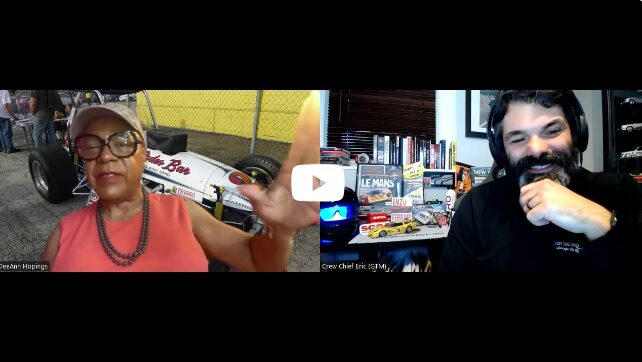
All of our BEHIND THE SCENES (BTS) Break/Fix episodes are raw and unedited, and expressly shared with the permission and consent of our guests.
DeeAnn Hopings’ Bio
I’m 75 now and have been a car person since childhood. I discovered Indy cars in 1957 and Formula 1 in 1961. Since then I’ve attended all sorts of events run in the US from Formula 1 to Legends Cars. In no particular order, I’ve attended events for various classifications such as: USAC, IMSA, WoO, DIRT, ISMA, NASCAR, the SMART Tour, SCCA, Professional Sports Car, CART, IRL, Trans-Am, Grand-Am, Vintage events, IndyCar, Unlimited Hydroplanes and Tunnel Boats.
I’ve also been to a number of short tracks such as: Toledo Speedway (my home track), Ventura, Perris Auto Speedway, Chemung Speedrome, Spencer Speedway, Bowman Gray Stadium, Sandusky Speedway and the dear departed Santa Fe Speedway and the Syracuse Moody Mile.
Super speedways include: Michigan International and Darlington
I’ve also been fortunate to drive a Legends Car, a Busch Series car (then) and a NASCAR Pavement Modified, but not in competition.
Car that I have owned: 1972 Honda 600 Coupe, 1970 Lotus Elan +2S, 1975 Fiat 131 Brava, 1980 Chevrolet Citation, 1984 VW Quantum, 1990 Nissan Maxima SE, 1994 Isuzu Trooper and currently a 2009 factory John Cooper Works MINI Cooper Clubman. All were purchased new except for the Lotus and all with manual transmissions.
Notable events that I have attended:
- All F1 events run in downtown Detroit
- 1st Michigan 500 at MIS in 1981
- Copper World Classic, Phoenix International, 1995
- Super Dirt Week, mid-90’s, Syracuse Moody Mile
- The Larry and Gary Show, USAC sprint cars, late 60’s/early 70’s, Toledo Speedway
- Long Beach, 2001 and 2019
- Columbus Camel GT, mid-80’s
- Can-Am, Mid-Ohio, 1973
People that I have met and many signed my collection of motorsports books: Dan Gurney, Phil Hill, Rick Mears, Bobby Unser, Al Unser Sr., Sir Jack Brabham, Bobby Rahal, John Watson, Vic Elford, Willy T. Ribbs, Roberto Guerrero, Lyn St. James, Davy Jones, Johnny Rutherford, Parnelli Jones, Sam Posey, Derek Bell, Emerson Fittipaldi, Scott Goodyear, Ken Tyrrell, and Ove Andersson.
I used to listen to Sid Collins’ Indy 500 radio broadcasts starting in the 50’s and first went to a closed circuit broadcast in 1964 (sad year unfortunately). I watched F1, Le Mans and Indy car events on ABC’s Wide World of Sports on a one week delay.
Thanks, DeeAnn Hopings


